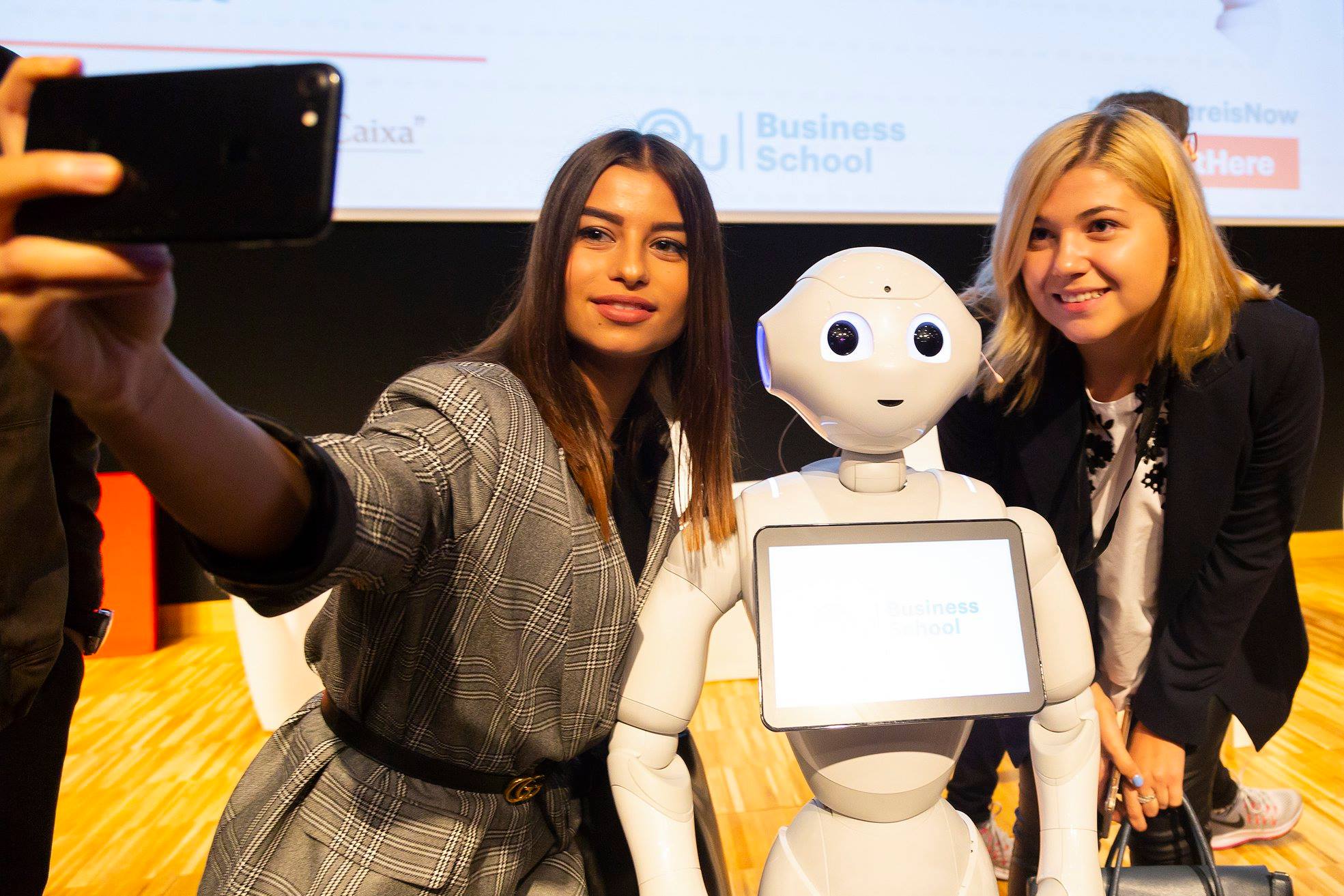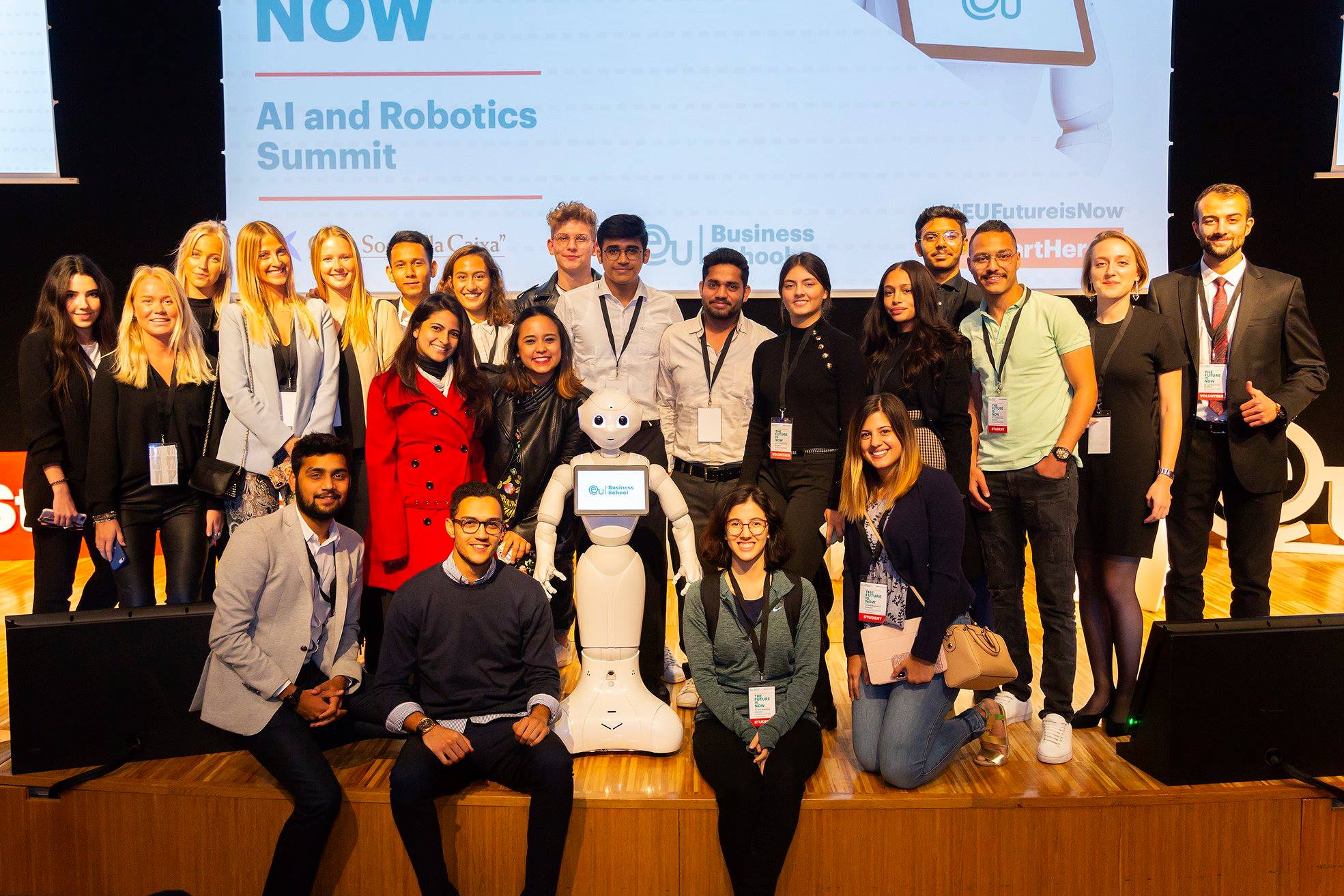The Benefits of Robots in Education
Education has changed considerably in the past few years. With new technologies entering classrooms across the world, and the broad implementation of remote learning caused by the pandemic, things have been very different for students.
At EU Business School, we’re always interested in learning about the newest advancements in technology and one of the things that have caught our attention recently has been the increasing use of educational robots.
Not only can these robots optimize the learning experience, they can also give students the key computer skills that have become essential in the job market.
Keep on reading to find out more about what educational robots are and why they are so beneficial for students everywhere.


What are educational robots?
Educational robots are used to allow students to pick up skills in a range of Science, Technology, Engineering, and Mathematics (STEM) disciplines, which are increasingly important in a world in which technology is advancing rapidly.
The robots facilitate learning and introduce students to robotics at a young age. In primary education settings, students can learn how to build and program a robot to perform a range of basic tasks.
As students grow older, more advanced robots can be used that can perform more complex tasks and are more complicated to program.
There is a range of different uses of robots in the classroom that can be adapted to suit the learning needs of different age groups.
Benefits of educational robots
Educational robots can provide students with a range of different benefits as they progress through the education system. Not only can they help young students develop cognitive skills and mathematical thinking at an early age, but it also gives them skills that they can transfer to other areas of their learning.
In many cases, they can also assist teachers, or even act as an avatar for students learning remotely.
There’s a whole world of opportunities with educational robots, and here are just some of the benefits that they can provide:
Preparing students for future career opportunities
As the workforce increasingly moves towards STEM careers, the demand for computer programmers, technology experts and software engineers is higher than ever – and there’s also the potential to enjoy high salaries in these fields.
Currently, not enough students are leaving school and university with the STEM skills that companies require, but, by learning how to program robots and use technology from a young age, they will be better prepared for the competitive workforce of tomorrow.
Learning with robots also develops a range of other skills that employers look for, such as problem-solving skills, analytical reasoning and computational thinking.
Helping remote students access their school
Some students, for a variety of reasons, aren’t always able to attend school, and educational robots can provide a solution.
Robots can be brought into the classroom as virtual avatars for students at home. Through up-to-date video conferencing systems, the student can feel like they’re in the classroom and participating in learning, rather than having to work independently from home.
Simplifying complex programming from a young age
School should be all about equipping students with the skills and knowledge they’ll need later in life, and technology skills are among the most important.
Many people may think that robotics is an extremely complex field but, if it’s introduced to students from a young age, it becomes more accessible, engaging and fun.
Support students with special needs
It’s hard for one teacher to focus on every single student in the classroom, especially when each has individual needs. Robots can help students with specific requirements, taking some of the pressure off teachers and allowing students to develop their own personal learning experiences.
Robots can be programmed to work with individual students who need additional help and adapt work to suit them. It can help students to keep focused, push themselves further and get more enjoyment out of their education.
Popular educational robots in use today
There are already many examples of robots being used in the classroom, with some pretty impressive results.
Here are some of our favorite educational robots that are currently being used:
NAO
NAO is one of the most popular educational robots. This 58cm-high robot features two cameras and four microphones, as well as many other sensors that allow the robot to interact with a classroom in the same way a human would.
NAO can speak to students, listen to discussions and teach any subject and has been used in classrooms from primary schools to university level.
OWI 535
For secondary school students who can work with more advanced technology, OWI 535 has been used very effectively. It can perform a range of different functions and it’s fairly easy for students to make adjustments and customizations.
Makeblock mBot
Perfect for the earliest robotics education, the Makeblock mBot is a basic robot that’s designed to introduce children to robotics, programming and electronics.
Easy to assemble and control, it can be used by complete beginners or can provide a starting point for older students to create more complex robots.
LEGO Mindstorms EV3
LEGO has also created an educational robot, and their Mindstorms EV3 is a more advanced robot that’s designed for use by children over the age of 10.
The robot features sensors, and over 500 LEGO Technic components which makes the robot able to move, shoot, crawl, etc., among many other functions.
Robo Wunderkind
The Robo Wunderkind which comes in a set of blocks that can be connected to build a fully functioning robot.
It has basic functions that allow it to react to noise, move around a room and avoid obstacles.















